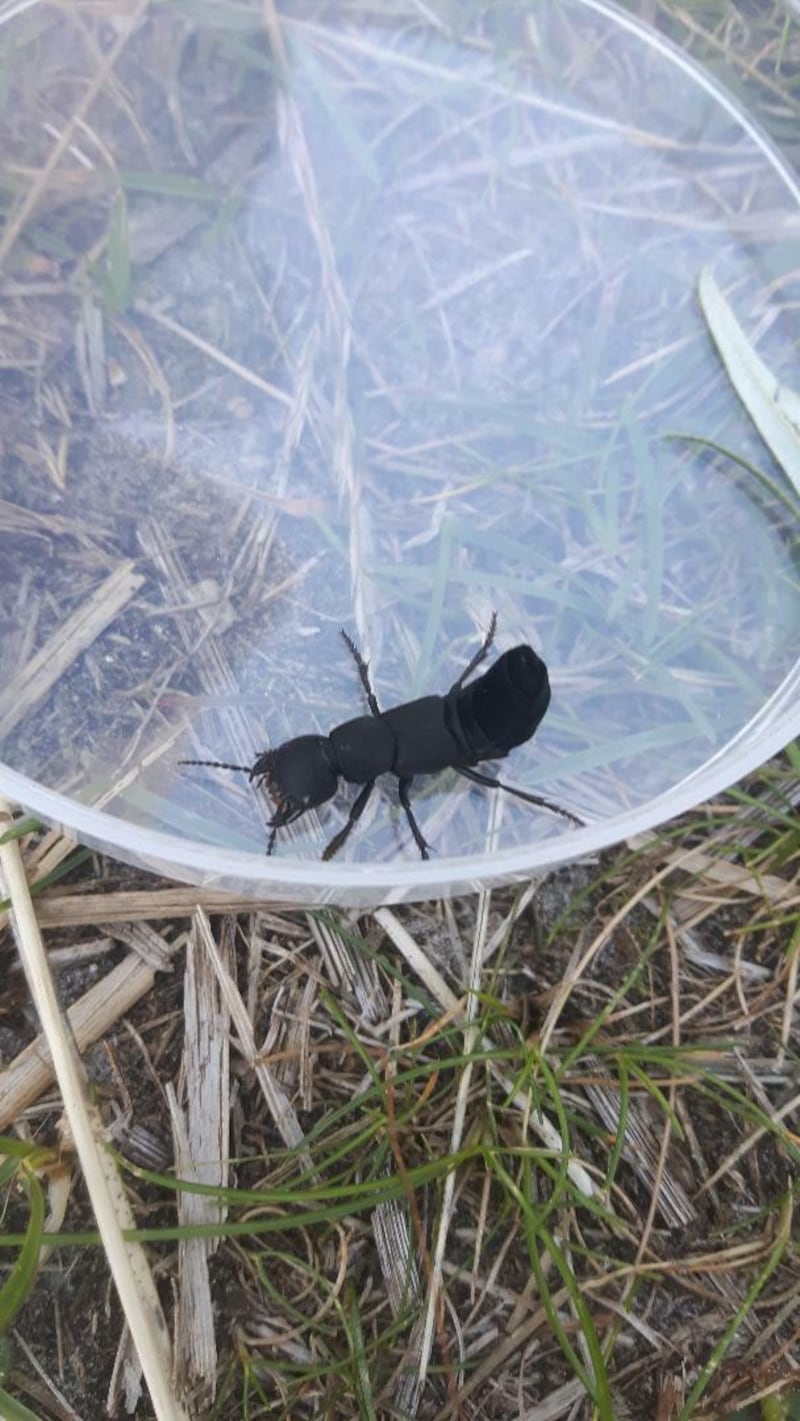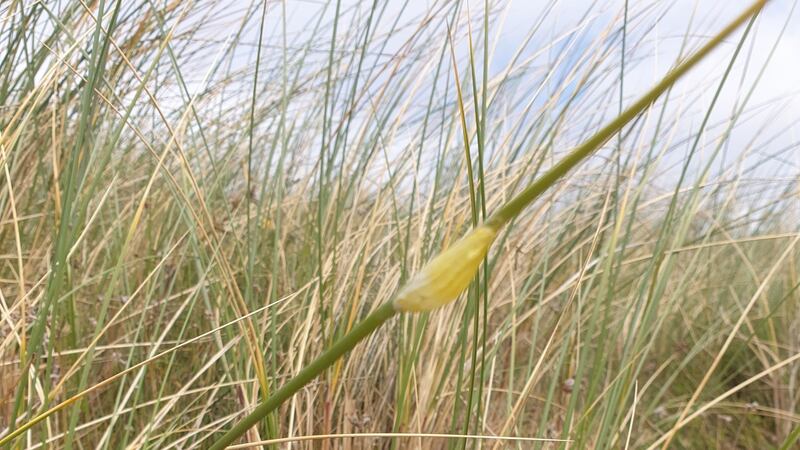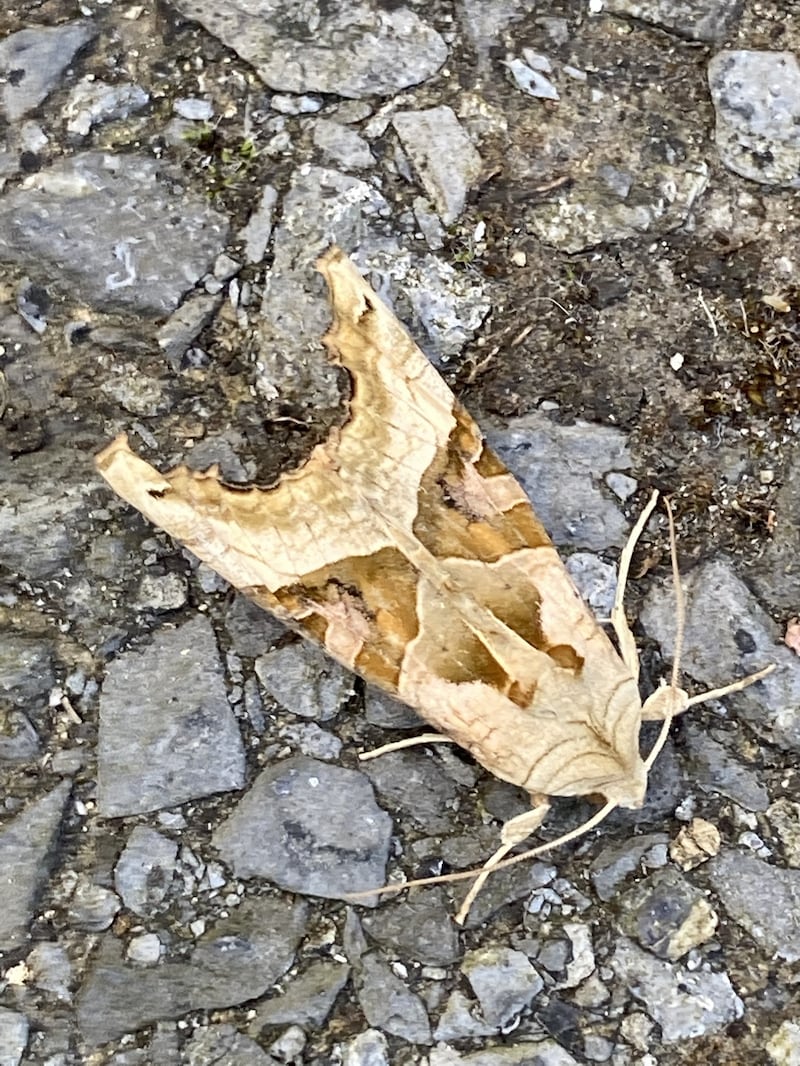Paddling with the kids in Wexford last month, we caught this crab – only to realise it was two crabs! We debated whether it was a predatory, parental or prenuptial embrace. A biologist told us it was a male protecting a female during her moult. Really? – Ian Brunswick
It depends on the point of view. The male is holding on to the female by the legs until she moults and he can mate with her soft-shelled body. Then, job done, he skedaddles.

Myself and my five-year-old found this on a walk in Bull Island. It raised its tail a few times, I presume as a form of defence. What is it? – Iarlaith Greene
It is a large beetle called the devil's coach horse. When alarmed, it opens its ferocious jaws and raises its tail-end. Years ago in Mayo it was considered very unlucky to allow children see it doing this.

I took this photo of a yellow furry caterpillar on the gates of the horses' paddock. I thought it was beautifully bright and was fascinated, as it seemed to flaunt a pink horn and two bands like an eye at me! – Siobhán Madden
Get a grip. It's behaving like this because it sees you as an enemy that might eat it and it is trying to deter you. It is the caterpillar of the pale tussock moth, whose hairs can give a nasty rash if handled.

Seen on the south side of Tralee Bay on the grass at the back of the beach. – Jonathan Bradshaw
It is the cocoon of the six-spot burnet moth, in which the larva overwinters. It is constructed high on slender swaying grass stalks, making it difficult for birds to attack it.

Please identify this moth, which flew out of garden refuse in my Dalkey garden. – Erica Murray
It is an angle shades moth.
Have you a nature query, observation or photo you would like to share with The Irish Times? Submit it, with location of the image, via our website irishtimes.com/eyeonnature











